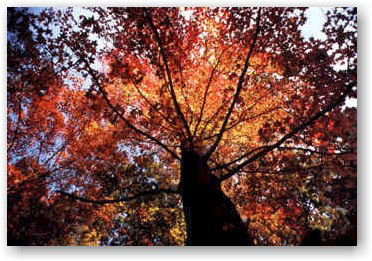
science

Doctor Quen Rubashov at a meeting of the Imperial Science Advisory
Board in New York last December.
Doctor Quen Rubashov at a meeting of the Imperial Science Advisory Board in New York last December.

He Talks To Trees
And the amazing thing is, one of them talks back!
Rubashov studied at the University of Neordan and Credix University School of Biology, and received his doctorate from Johns Hopkins. His specialty is exobotany, and he is responsible for identifying and naming over 300 alien species of plants.
Another scientist with such a distinguished record would be content to rest on his laurels. Quen Rubashov, however, is anything but content. His current problem, which takes up most of his time outside his administrative duties, is a specimen called Arbofucatus amny -- for us laymen, a tree-like species, common to many worlds, which was discovered way back in 2097 CE.
A specimen of A. amny -- like the one housed in the main exobotany dome of the Preserve -- looks like a particularly tall oak or maple in full bloom. It's not until one watches for a while, that one comes to realize that the tree's leaves and bark are forever changing color, in complex patterns that defy easy analysis. It's like watching time-lapse of a forest changing color in the autumn.
Quen Rubashov thinks that he has cracked the code of these color-changes. And hold onto your hat -- he thinks that the tree is talking.
"I'm certain that there is intelligence behind these systematic color patterns," Rubashov says. "I'm convinced that we're witnessing some kind of language. This specimen has sat here for 270 years, and all the time it's been trying to communicate with us."
Talking trees? In a Galaxy as crammed-full of wonders as ours, it's entirely possible, says leading exobiologist Brookdalyn Cheseth of Borshall University. "I've read Dr. Rubashov's papers and reviewed his data, and I think he may be on to something. It wouldn't be the first time we've missed an intelligent species. Look at the case of the Kaanese, just a dozen years ago. At first we thought they were nonsapient animals -- it wasn't until we did a thorough analysis of their biochemistry that we were able to appreciate their intelligence."
If Dr. Rubashov is right, then there may be economic and political reprecussions. Specimens of Arbofucatus amny are found on just about every Imperial planet; as a nonsapient species, they have been exempt from the Act of Nonexploitation. If they were to fall under the protection of the Act, no one is sure what the impact may be.
For now, the Imperial Council has declined to grant Dr. Ruibashov's trees recognition under the Nonexploitation Act. A quick survey of major Imperial worlds shows that specimens of A. amny are usually well-regarded and fairly well protected anyway. Their beauty and their majesty, it seems, may protect them where the law cannot.
For now, Quen Rubashov continues his research, hoping to find just the right data to convince the Council. And meanwhile, he and his fianceé, linguist Magretti Folonzwa, are making plans to tie the knot sometime early next year. The ceremony -- to which the Empress will almost certainly be invited -- will reportedly be held on the grounds of the Imperial Botanical Preserve, perhaps under the soaring limbs of Quen Rubashov's favorite alien tree.
Even as a child, Quen Rubashov was fascinated by trees. On his homeworld, Neordan, he spent many happy hours camping in the Planetary forest Birnam Wood. Once, when he was 12, park rangers had to use antigrav harnesses to rescue young Quen from thirty meters up in a soaring spruce.
Now the tree-climbing daredevil is soaring to new intellectual heights as Director of the Imperial Botanical Preserve. The Preserve, located just a few hundred kilometers from the city of São Paulo on Terra, is the Empire's leading scientific institution for the study and conservation of plant life.
Rubashov, 38, is a dapper man with a serious face and a wardrobe that is as much at home in the halls of the Imperial Palace as in the laboratories of the Botanical Preserve. And he's a frequent visitor to the Palace -- as the newest member of the Imperial Science Advisory Board, he is responsible for guiding the Empress Herself in forming and implementing the Empire's science and technology policy.
 14/9/215
14/9/215